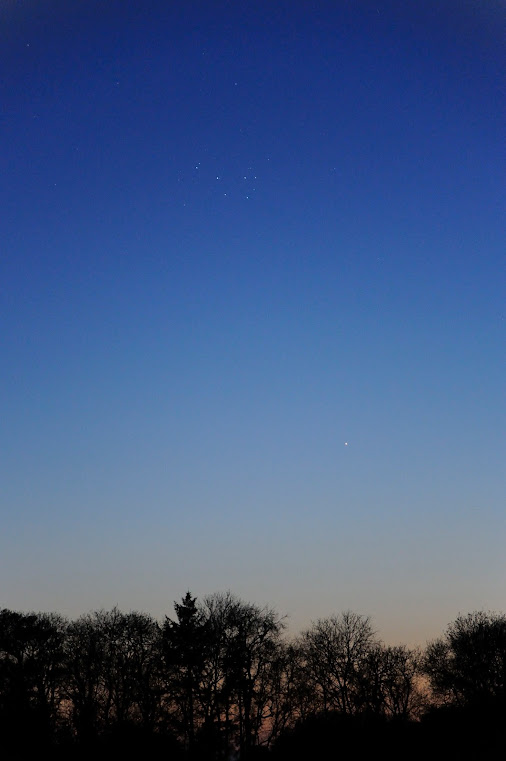I thought I would have another go at some more variable stars on Monday (the 25th April) to see if I could come up with some more magnitude estimates. The BAA has some other springtime suggestions for beginners with binoculars. I decided to have a go at AH Draconis (AH Dra) which is on chart 106.03. Also on this chart is the variable TX Draconis (TX Dra) which I thought I would do as well. TX Dra is marked in my Atlas and isn't far from Eta Dra. Draco, the Dragon, is a sprawling constellation that sort of encircles the Little Bear, Ursa Minor. At this time of year Draco, which is circumpolar from my latitude, is climbing the sky east of the North Celestial Pole. From the Pole Star, if you draw a line through the first couple of stars of the Little Bear's tail and continue it on towards the east you will come to Eta Dra.
TX Dra is southeast of Eta and forms a sort of pentagonal with four other stars which include the star labelled K on the chart and the variable WW Dra. There are 7 comparison stars labelled R, S, K, T, N, P and U. These seemed a lot more spread out on the chart than the ones for Z and RY UMa. This does make it more difficult to make a comparison between stars as you have to scan across the sky from one star to another. However, I was fortunate that TX was apparently equal in brightness to the star labelled K which is nearby. So at 21:27 UT my estimate of TX's magnitude was 7.0. If you again go to the American Association of Variable Star Observers' website you can plot out the latest estimates of the visual magnitude for this star. Just put in TX Dra into their 'Pick a star' box and 'Plot a light curve'. The Julian Date for the 25th April 2022 at 21:27 is 2459695.39375. You can see that my estimate seems to be pretty good (click on any of the black open circle data points around this date and you will see estimates around this value).
The moon on this date was two days past last quarter and so was not a problem. The sky was quite dark and I could identify star P at 21:13 UT which is magnitude 8.4, so the limiting magnitude for my 8x24 binoculars was fainter than this. I then went on to look at AH Dra. There are some brightish stars nearby which make locating AH relatively easy. These brightish stars form a sort of isosceles triangle with Eta and Nu Dra with these latter stars forming the base. I found the comparison with other stars (labelled 7, 1, 2, 6, 8, 5, and 9) difficult because of their being scattered but at 21:48 UT I thought that AH was roughly equal in brightness to the star labelled 2 which put it at magnitude 7.3. Again by plotting the light curve for this star on the AAVSO website. It is difficult to tell at the moment as their is sparsity of data, but I may be a bit off what other observers are reporting as it was fainter than this.
All text and images © Duncan Hale-Sutton 2022







